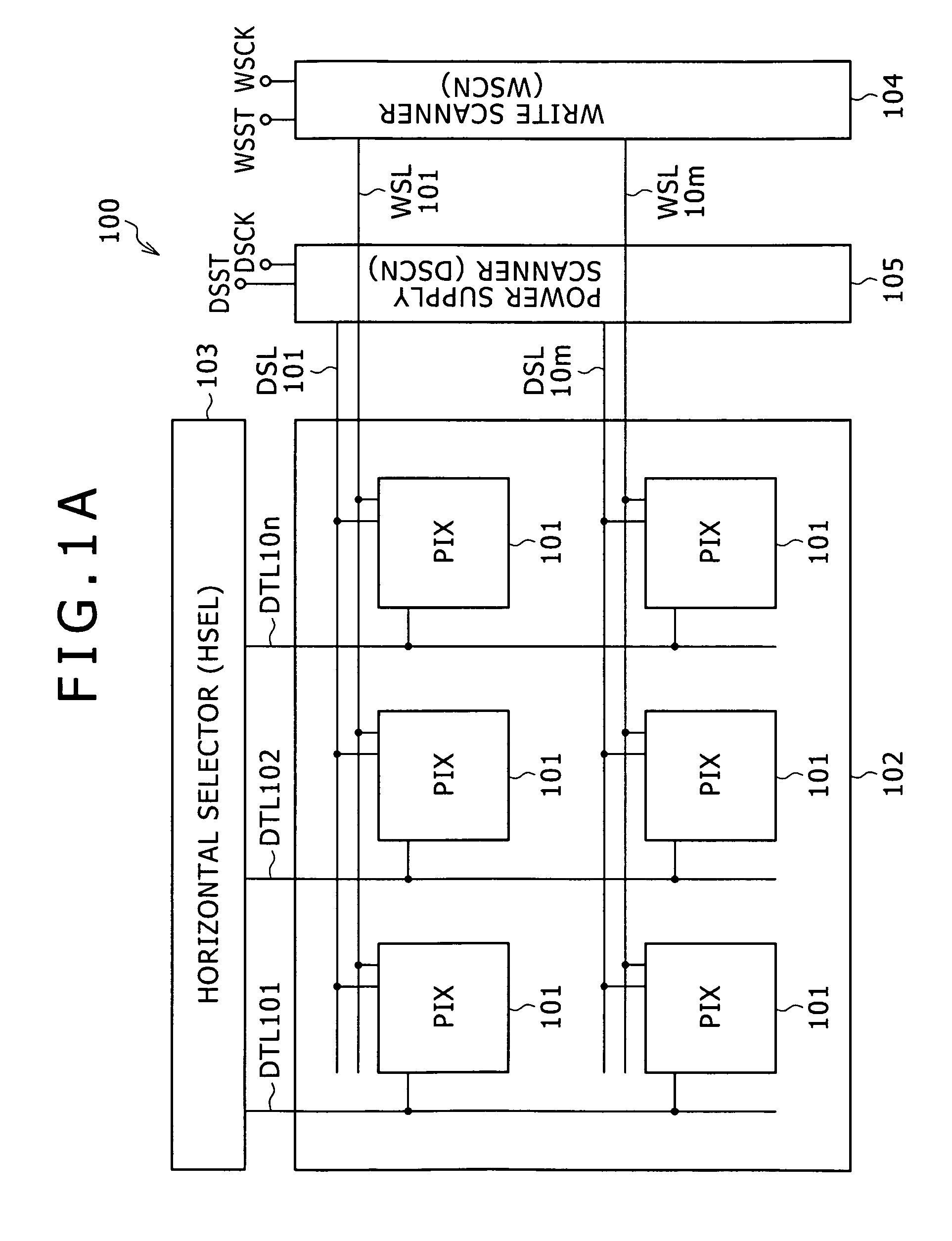Display device, method for driving same, and electronic apparatus
a display device and display method technology, applied in the direction of instruments, computing, electric discharge tubes, etc., can solve the problems of increasing the degree of complexity and the scale of the vertical drive circuit, the pixel array part, and the increase in the number of stages so as to reduce the scale of the peripheral vertical drive circuit, reduce the scale of the shift register, and reduce the scale of the circuit scale
- Summary
- Abstract
- Description
- Claims
- Application Information
AI Technical Summary
Benefits of technology
Problems solved by technology
Method used
Image
Examples
Embodiment Construction
[0034]Embodiments of the present invention will be described in detail below with reference to the drawings. Initially, in order to clearly show the background of the present invention and facilitate understanding thereof, the general configuration of an active-matrix display device will be described below as a reference example. FIG. 1A is a block diagram showing the entire configuration of the display device according to the reference example. As shown in FIG. 1A, this display device 100 includes a pixel array part 102 and a drive part (103, 104, 105) for driving the pixel array part 102. The pixel array part 102 includes row scan lines WSL101 to WSL10m, column signal lines DTL101 to DTL10n, pixels (PIX) 101 disposed near the intersections of both the lines so as to be arranged in a matrix, and power feed lines DSL101 to DSL10m disposed corresponding to the respective rows of the pixels 101. The drive part (103, 104, 105) includes a main scanner (write scanner WSCN) 104, a power s...
PUM
 Login to View More
Login to View More Abstract
Description
Claims
Application Information
 Login to View More
Login to View More - R&D
- Intellectual Property
- Life Sciences
- Materials
- Tech Scout
- Unparalleled Data Quality
- Higher Quality Content
- 60% Fewer Hallucinations
Browse by: Latest US Patents, China's latest patents, Technical Efficacy Thesaurus, Application Domain, Technology Topic, Popular Technical Reports.
© 2025 PatSnap. All rights reserved.Legal|Privacy policy|Modern Slavery Act Transparency Statement|Sitemap|About US| Contact US: help@patsnap.com



